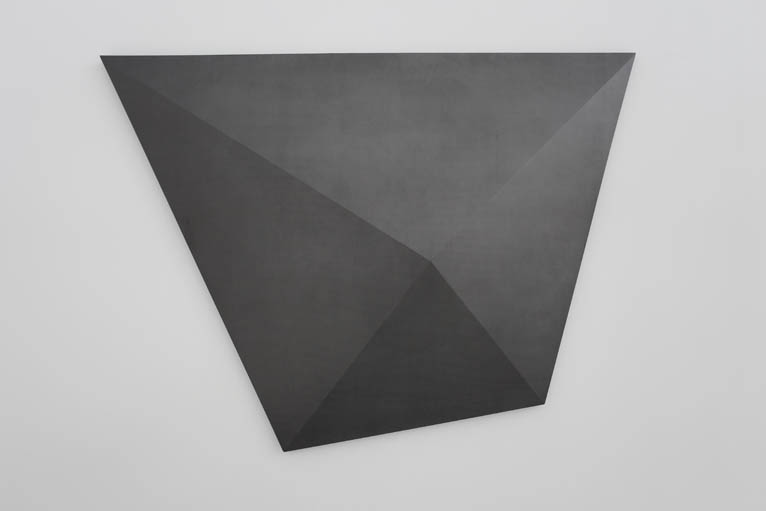LIU WENTAO: VIEW
| February 1, 2010 | Post In LEAP 1

In both its Chinese and English renderings, the title of Liu Wentao’s show “View” at White Space Beijing carries the meaning of “careful examination.” If we treat this as a demand on the viewer, it should not be understood as a reprimand of perceived visual apathy, but rather a positive response to viewing as a conscious act. Certainly no literary-inclined exhibition title can encompass the whole of Liu’s work, and when we see these formalist artworks collectively named Untitled laid out in the gallery space, vision is propelled into its role as a dynamic act. A specific way of viewing and general way of viewing alternate across the canvas, drawing on what Frank Stella (who often utilized shaped canvases) once said: “What you see is what you see.”
There are some critics who purport that Liu Wentao draws on the tradition of shaped canvases— most likely stemming from the fact that Liu also reworks the structures of his canvas frames. For example, although his pieces, including four pyramidal shapes (pencil on canvas, 200 x 300 x 20 cm, 2009) and a rectangular indentation (acrylic on canvas, 200 x 300 x 20 cm, 2009) hang on flat walls like typical paintings, they actually expand toward three-dimensional space. Hidden behind the interlocking weave of the canvas, artfully spaced pencil lines, and monochromatic, repeatedly applied acrylic surface is a conceptual reversal, a challenge to the two-dimensional demands of modernist painting. At a certain distance the viewer notices an unstable illusion of the plane, which becomes broken with fluctuations in proximity. Liu’s work on paper (115 x 76 cm, 2009) functions as a footnote to his canvas works and also consists of meticulously interwoven pencil lines, among which the viewer can make out a crease between the two pieces of paper. Liu’s work is not a diagram of objective theory; he instead follows an intuitive path that is fundamentally removed from the conceptual standpoint of someone like Stella.
Yet there is no denying the influence Minimalism bears on Liu Wentao’s work; the influence of minimalism on contemporary Chinese art itself is a complex issue. Conceptually, minimalism or works inclined toward minimalism can be connected to Zen Buddhism of the East, thereby often relegating analysis of the repetitive lines in Liu’s pieces to facts about his “cultural background.” Of course we cannot dismiss such analysis as pure speculation since it often represents the structure of thinking and cultural approach of the viewer, but Liu’s practice of line drawing, read through the language of form, clearly comes from his past experience with etchings. As we are drawn closer to these works, their rich materiality rings loud and clear beneath the prompting of the lines. Sun Dongdong

